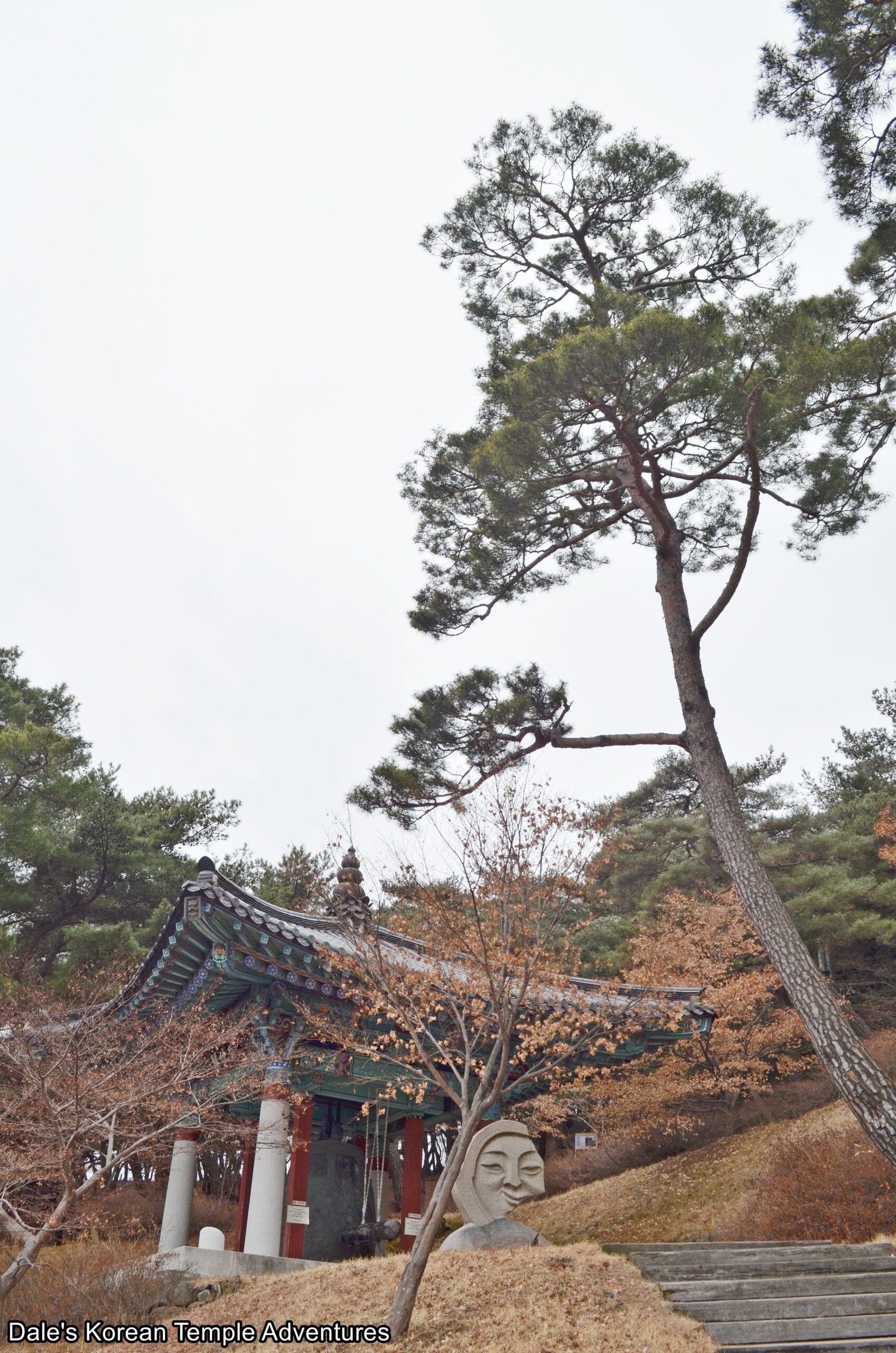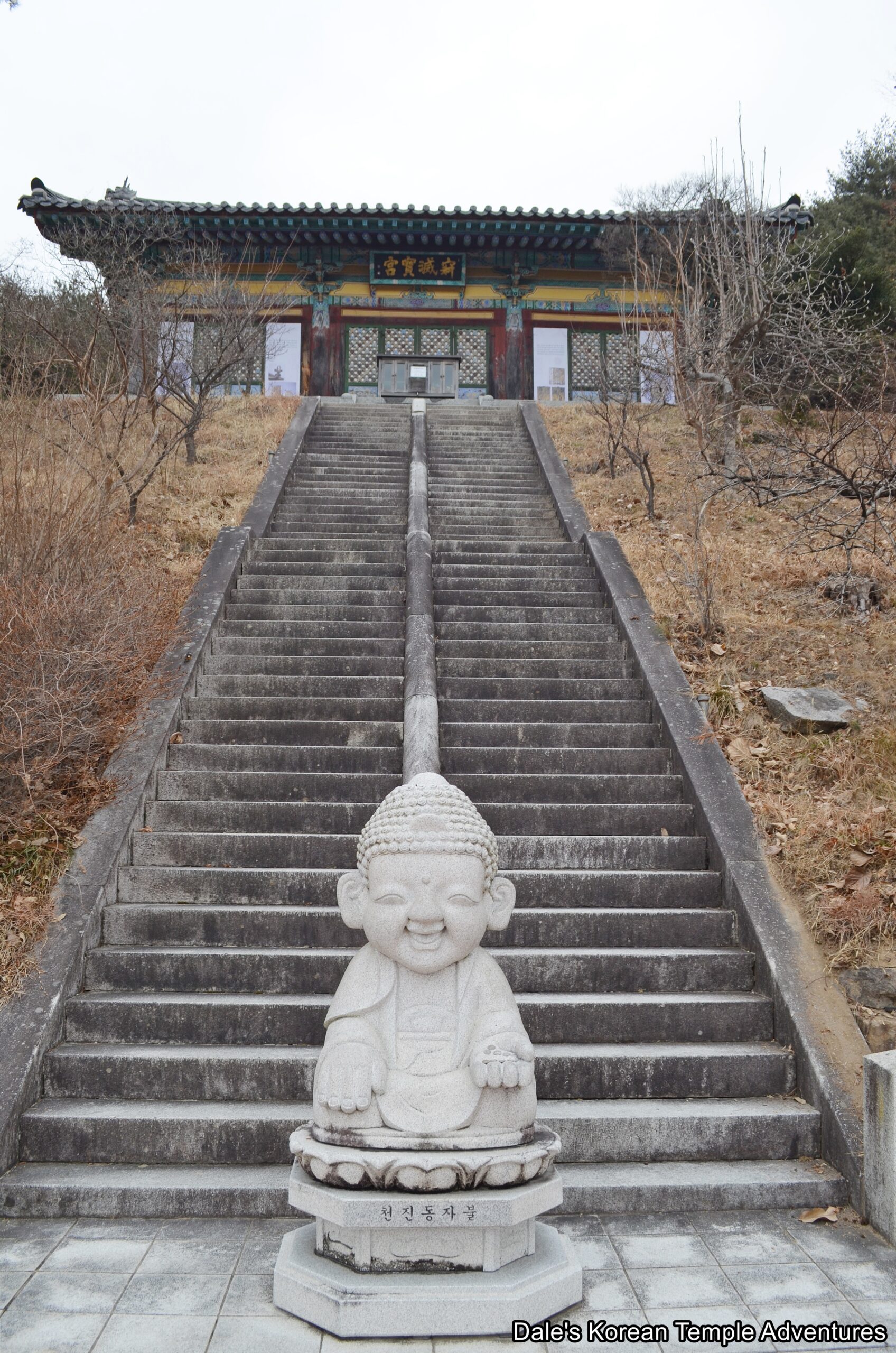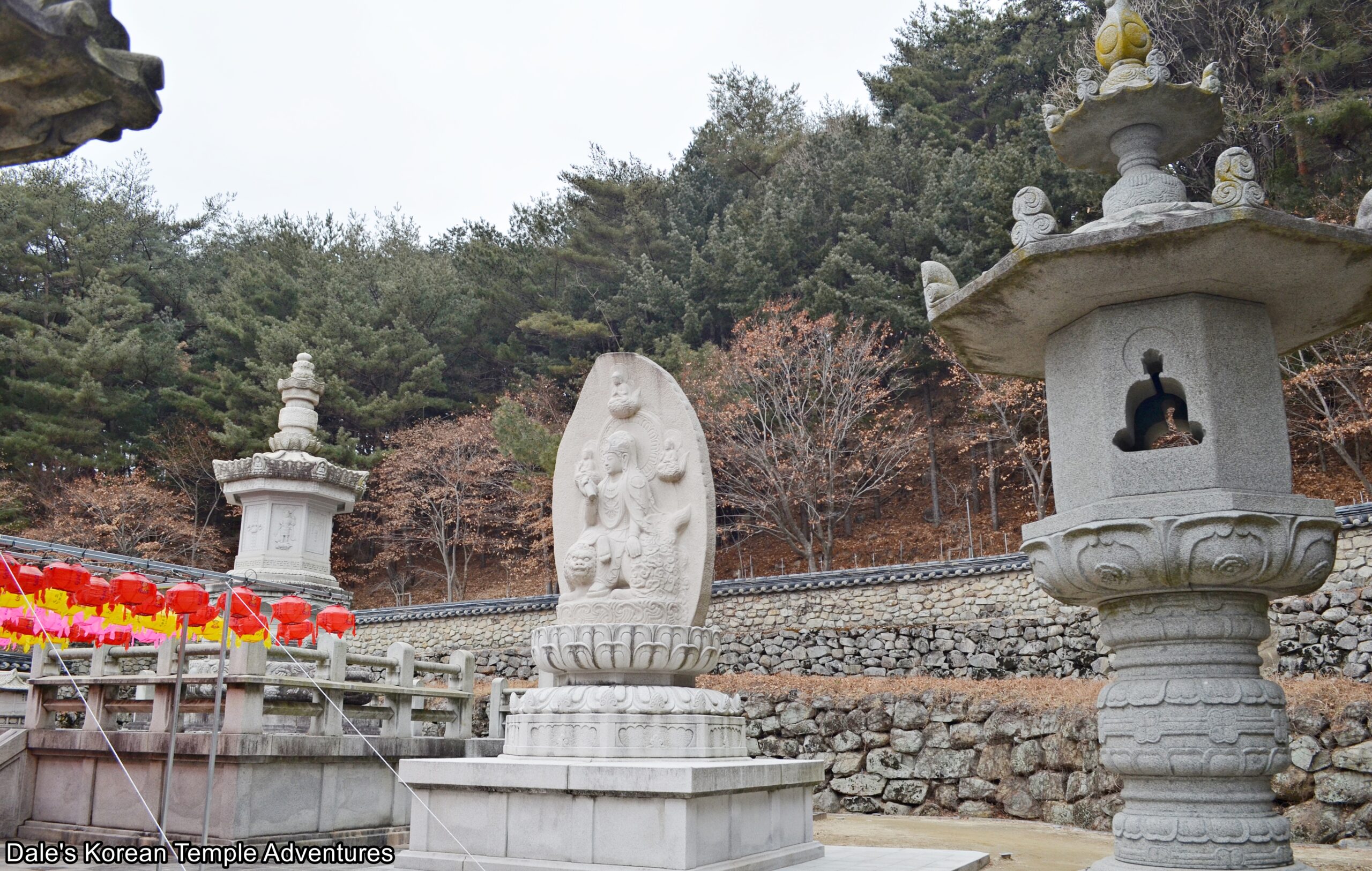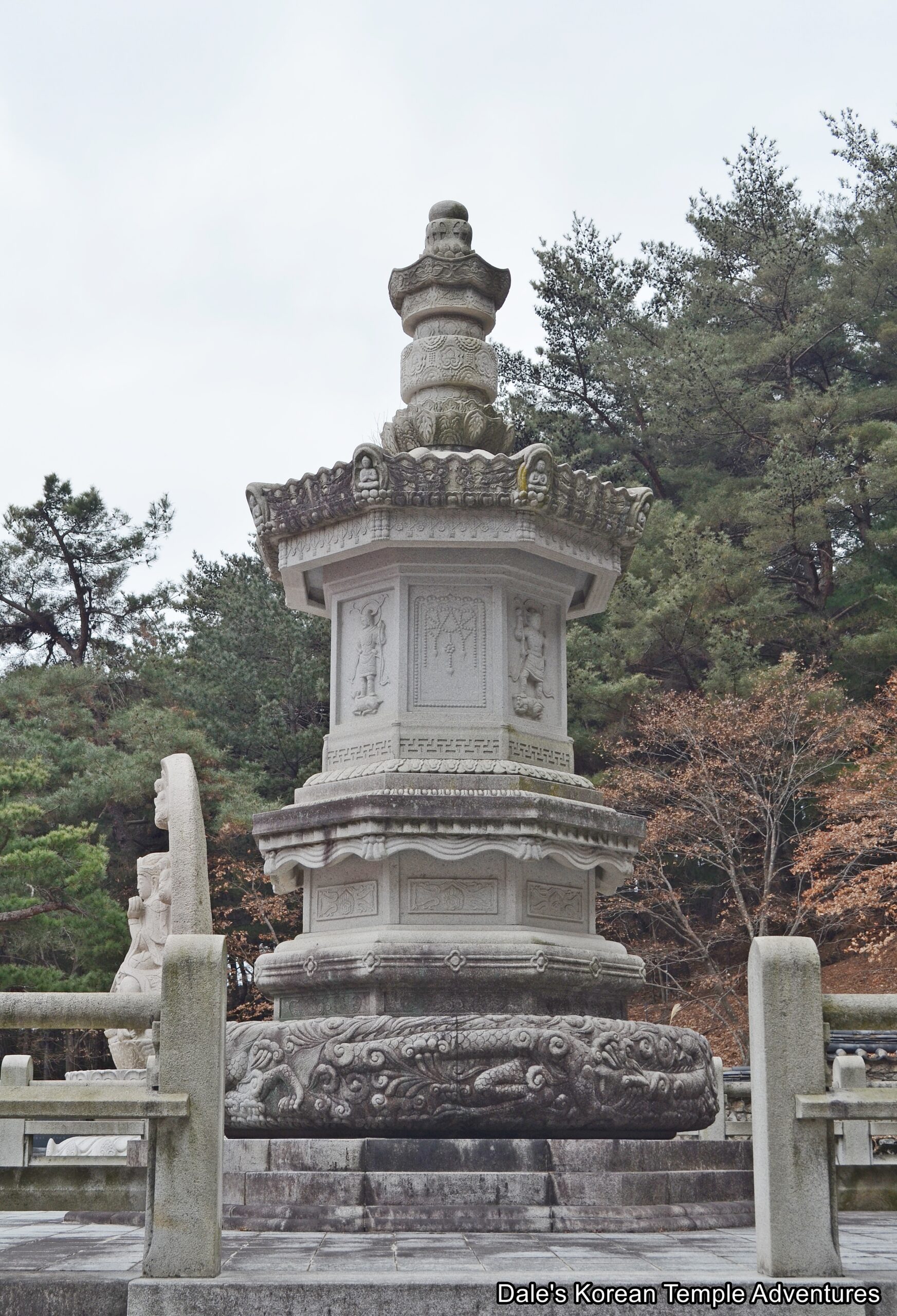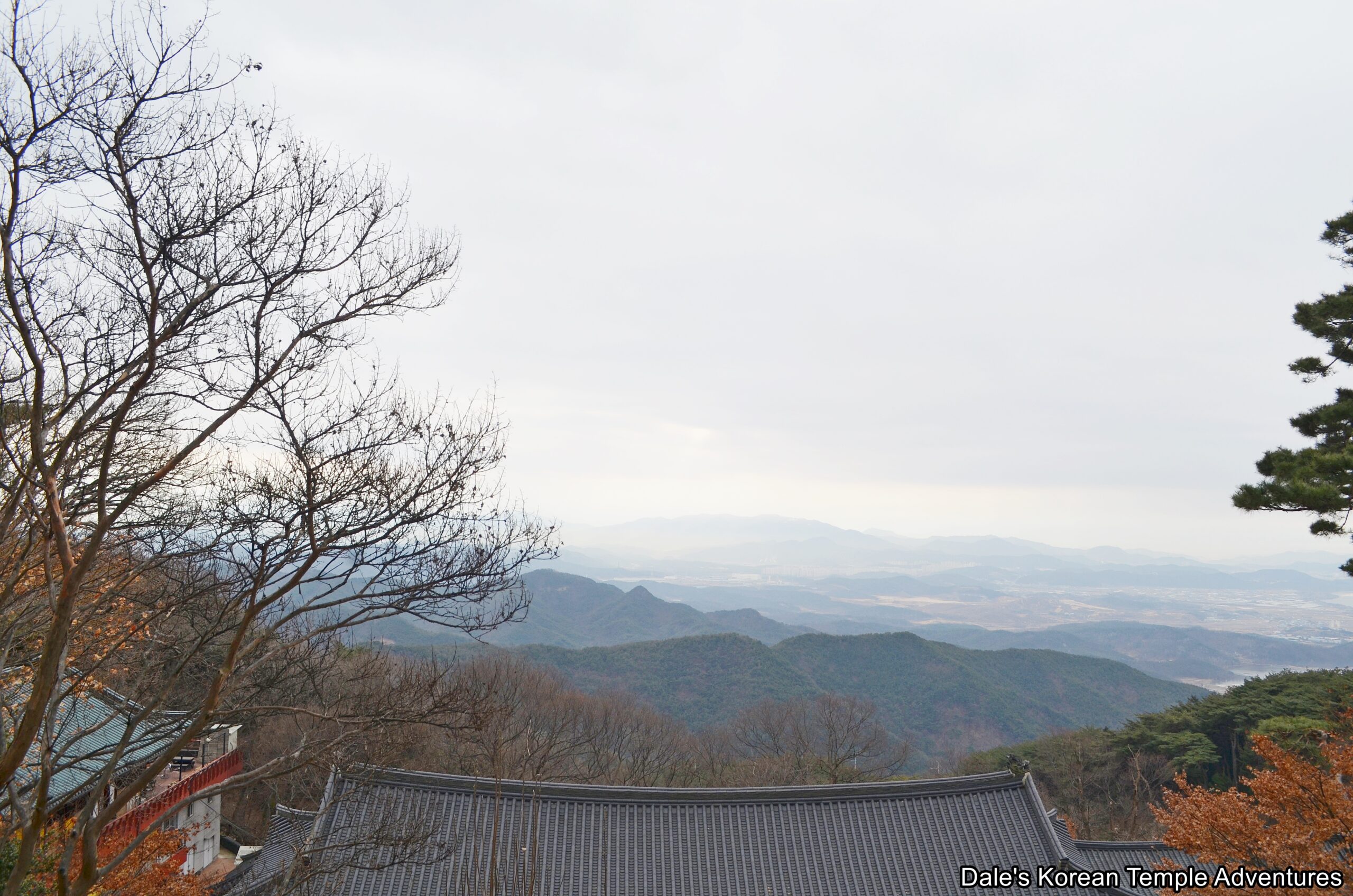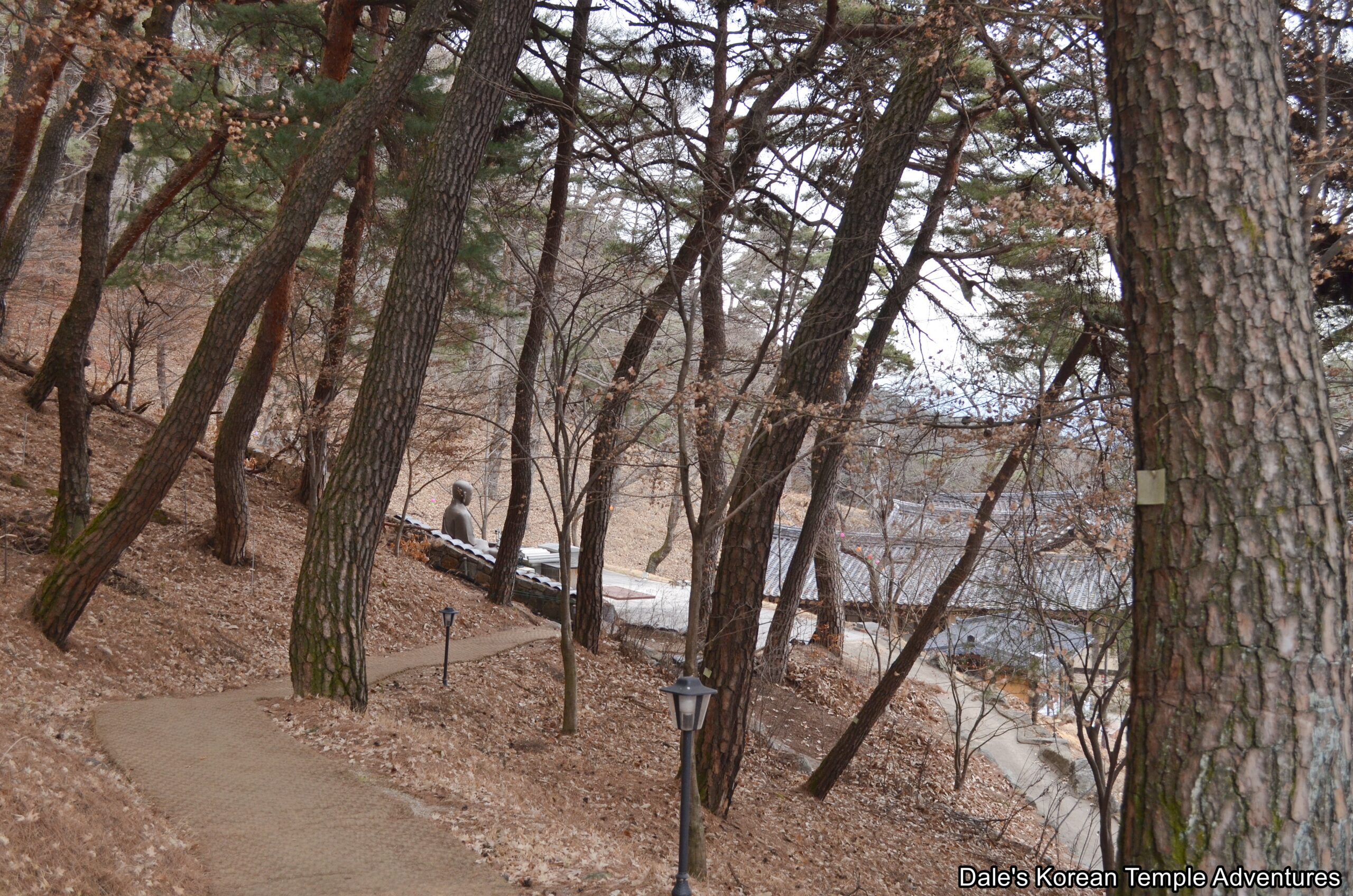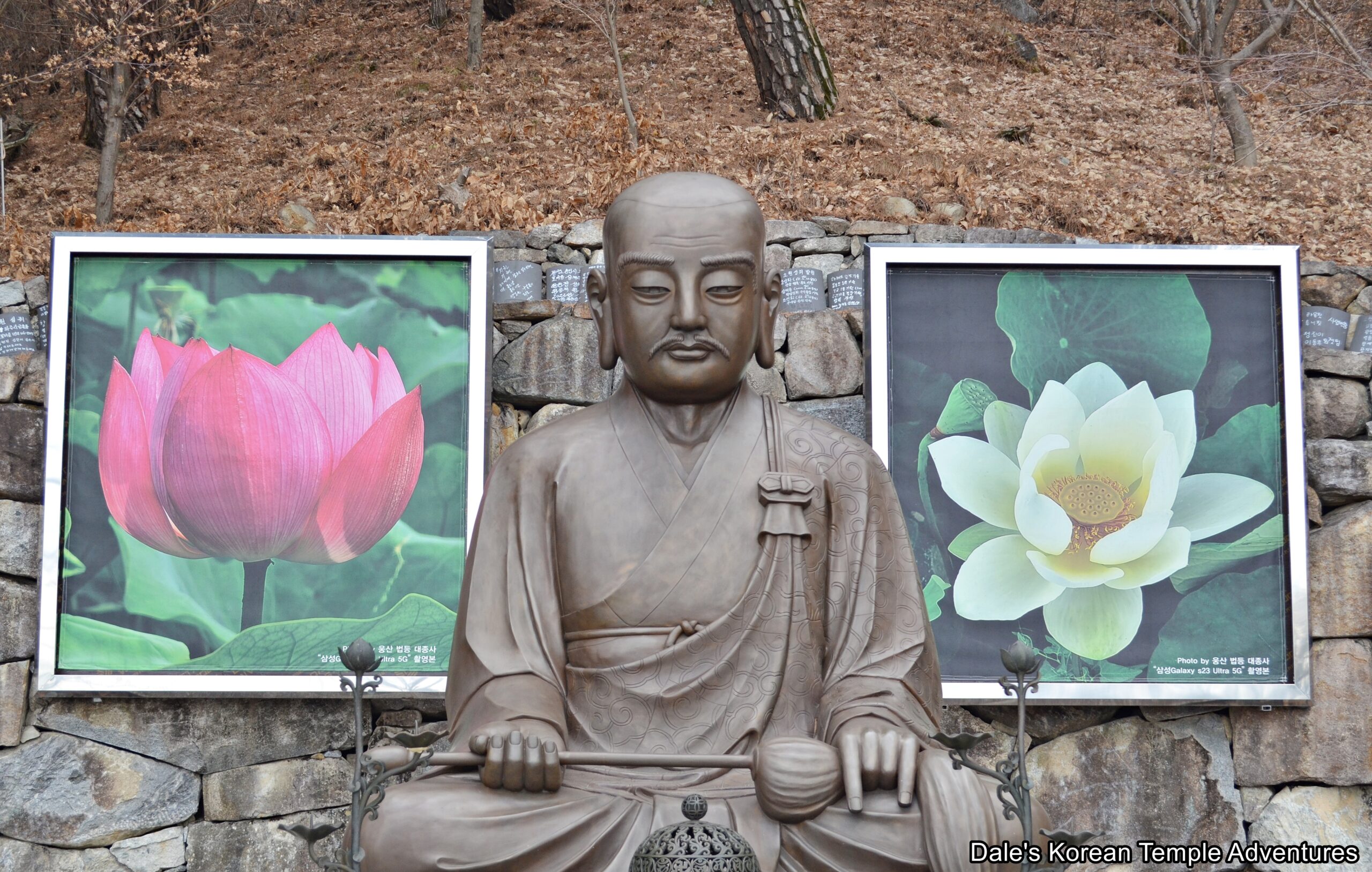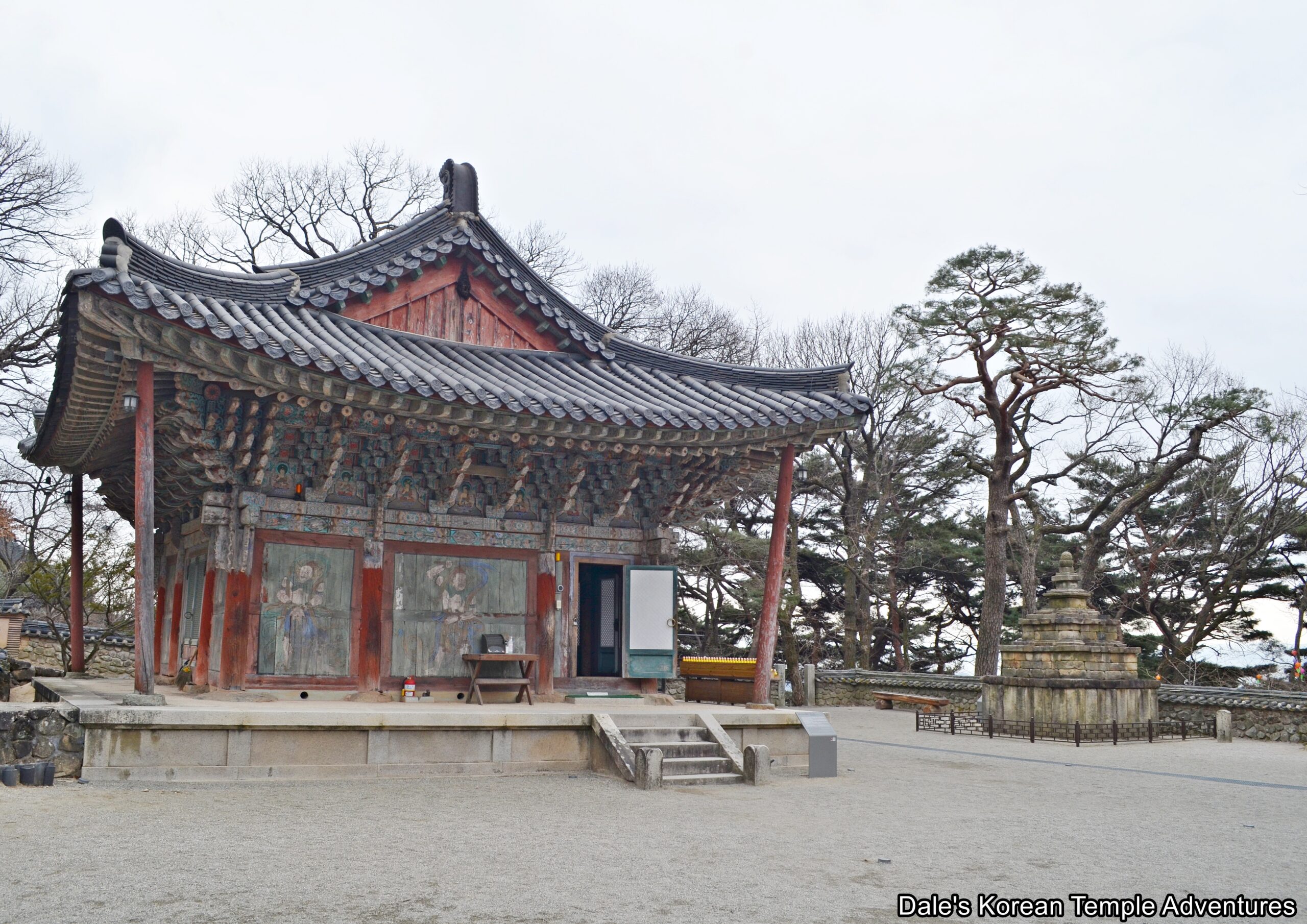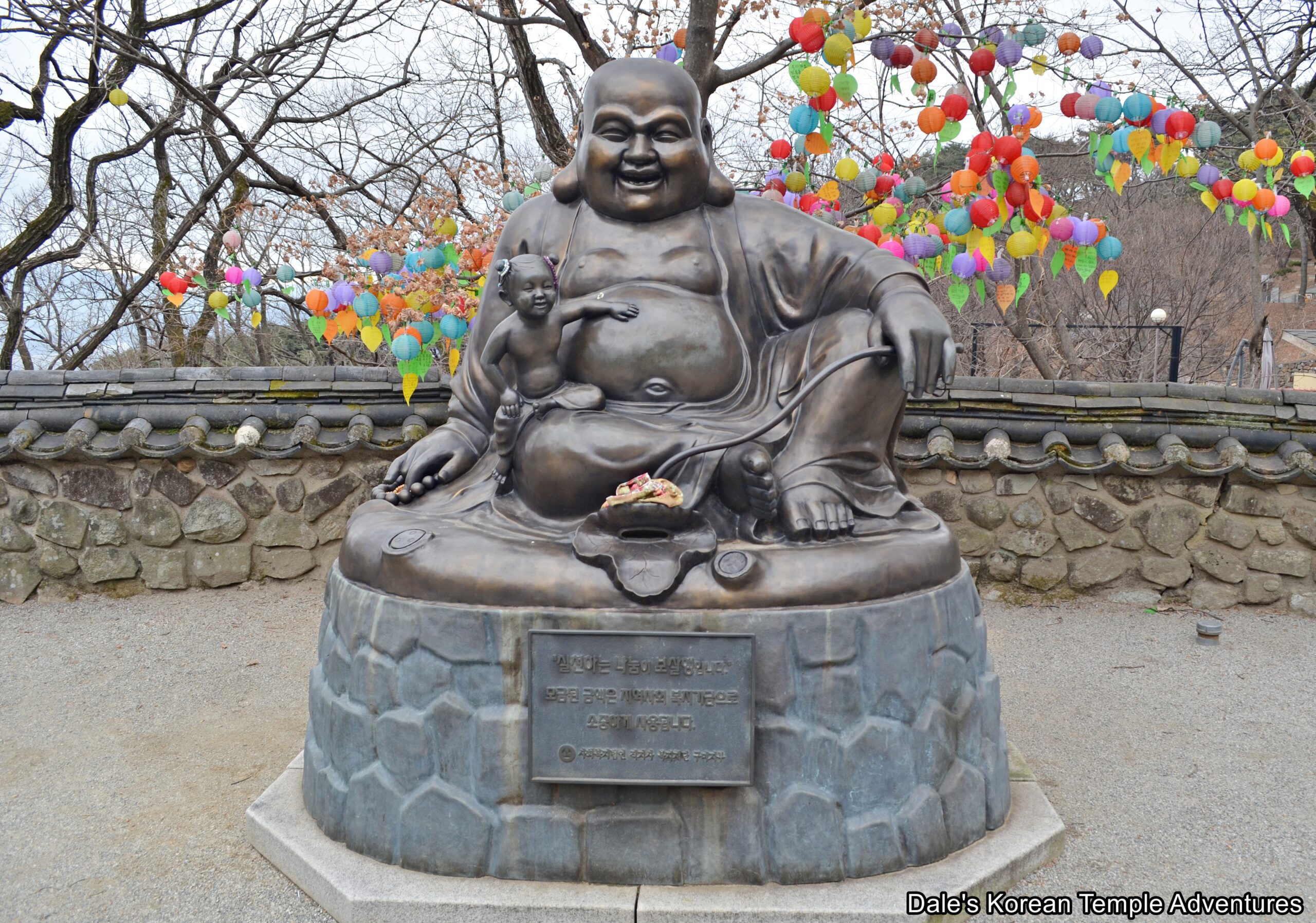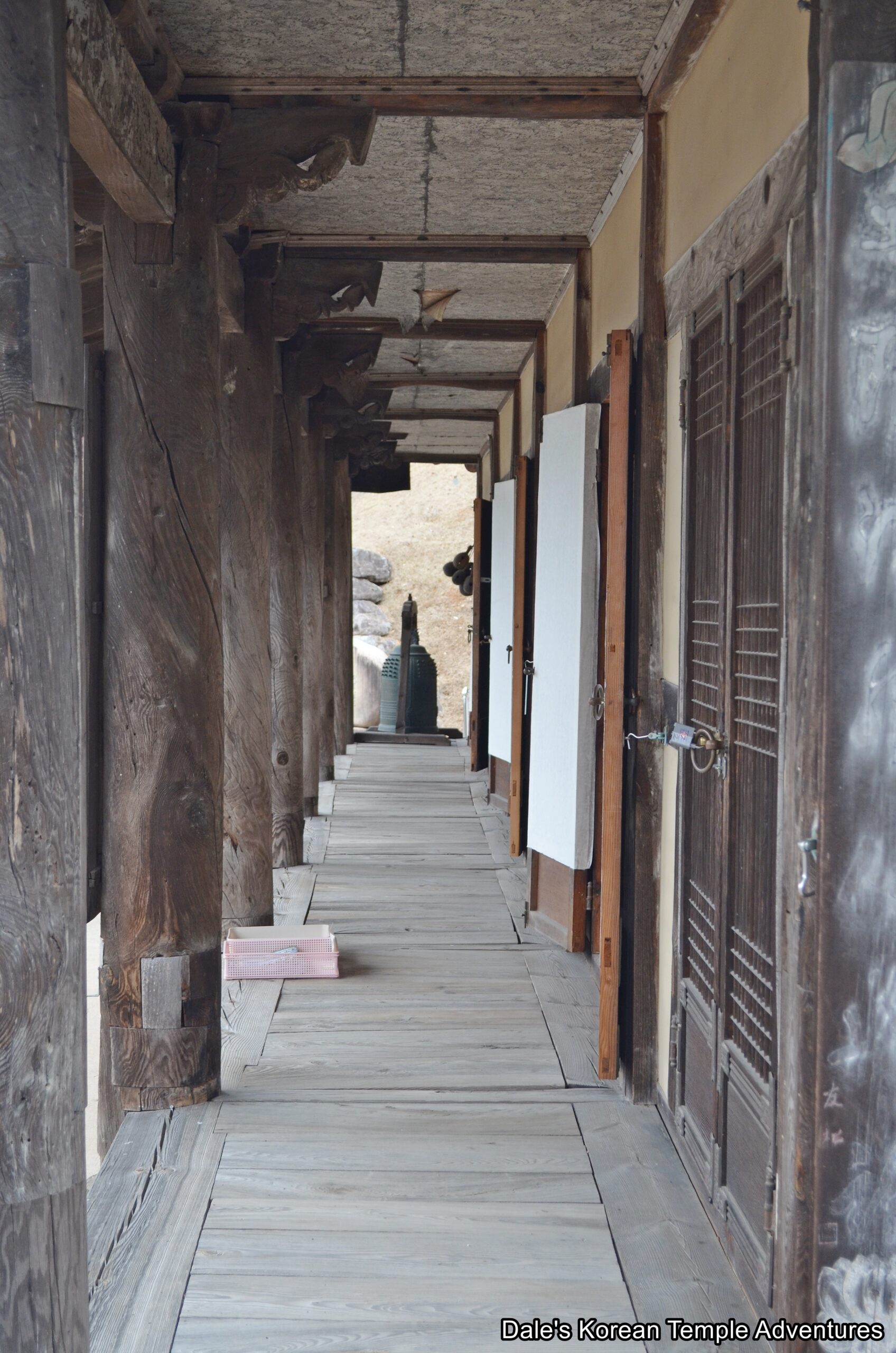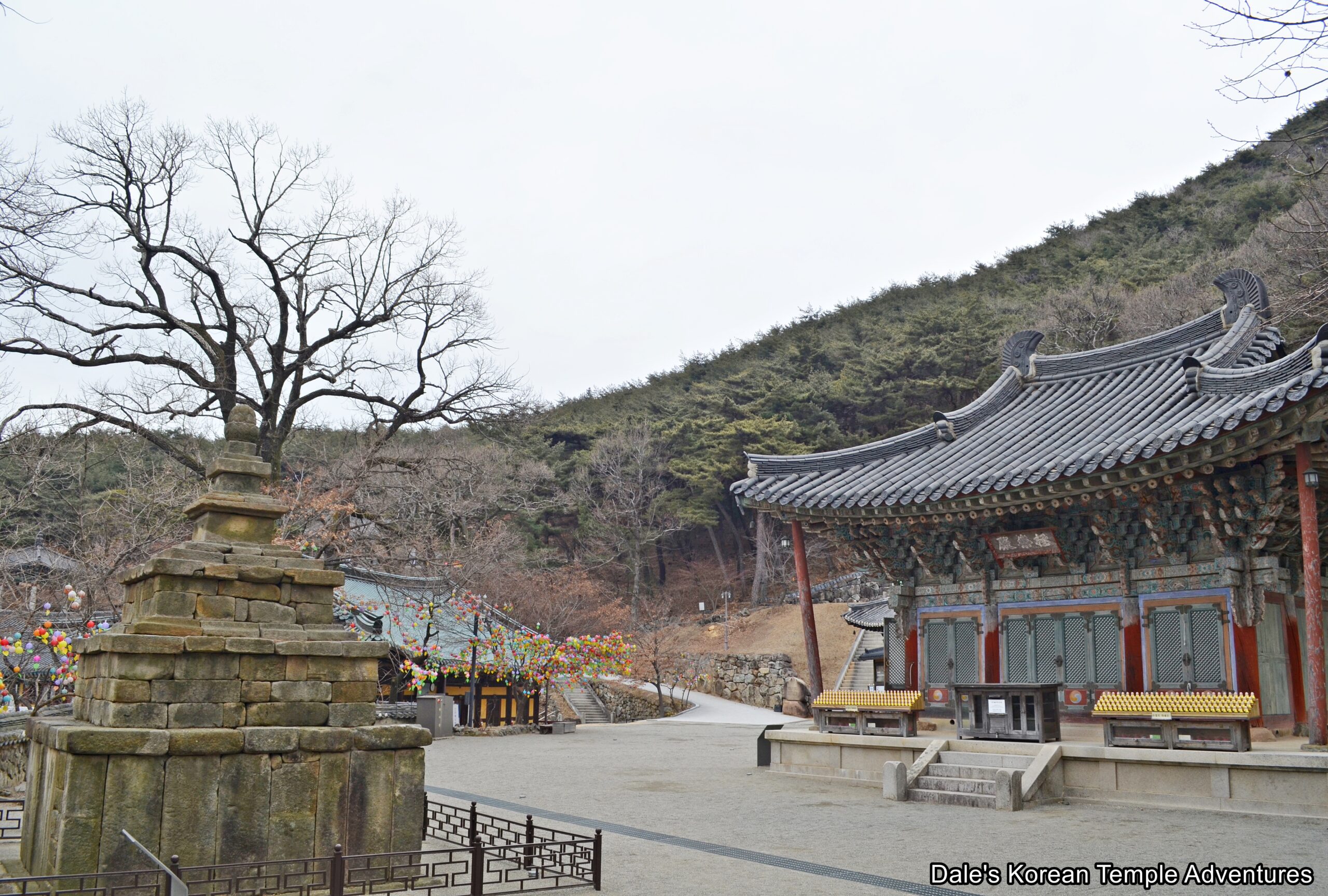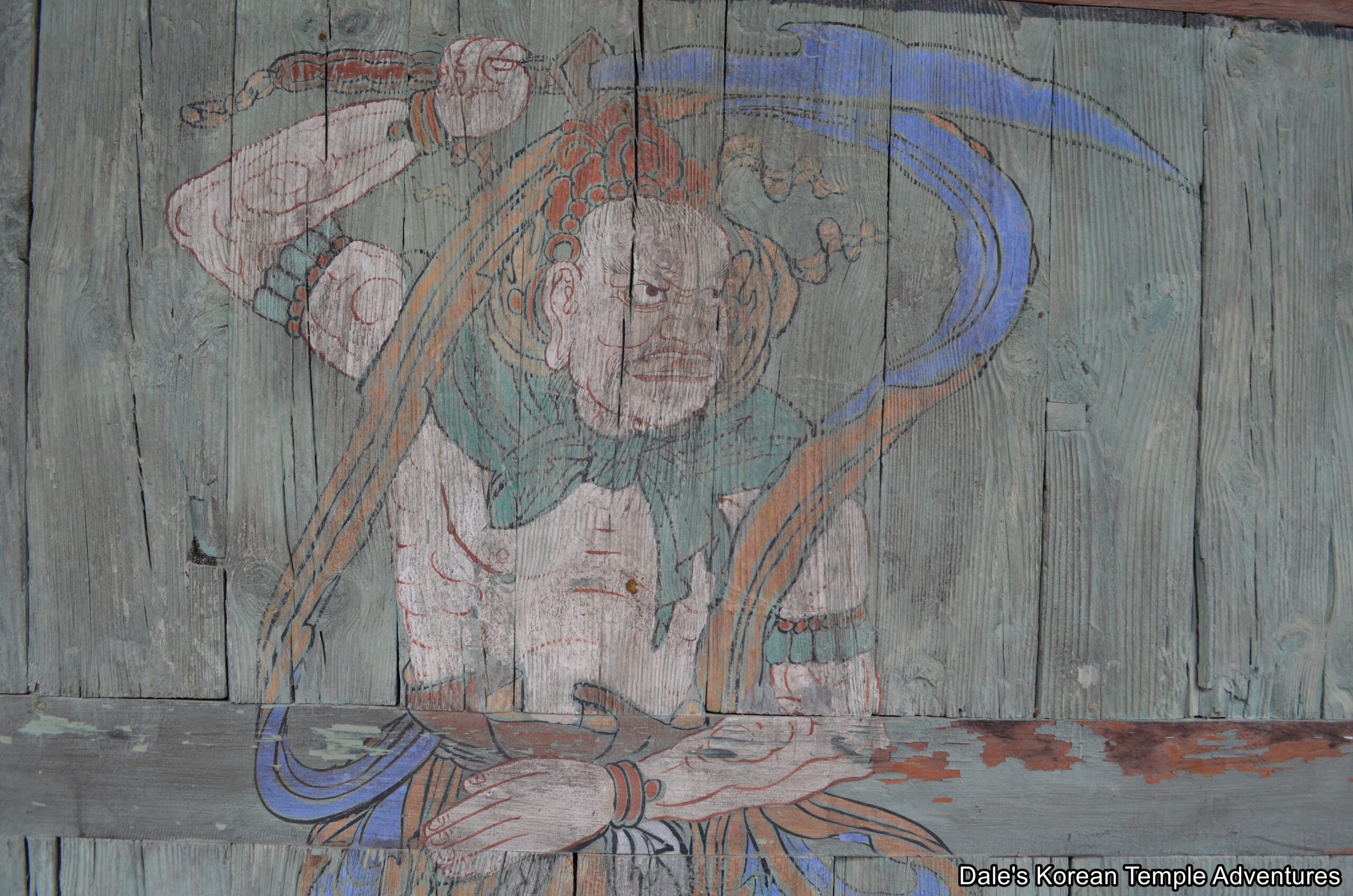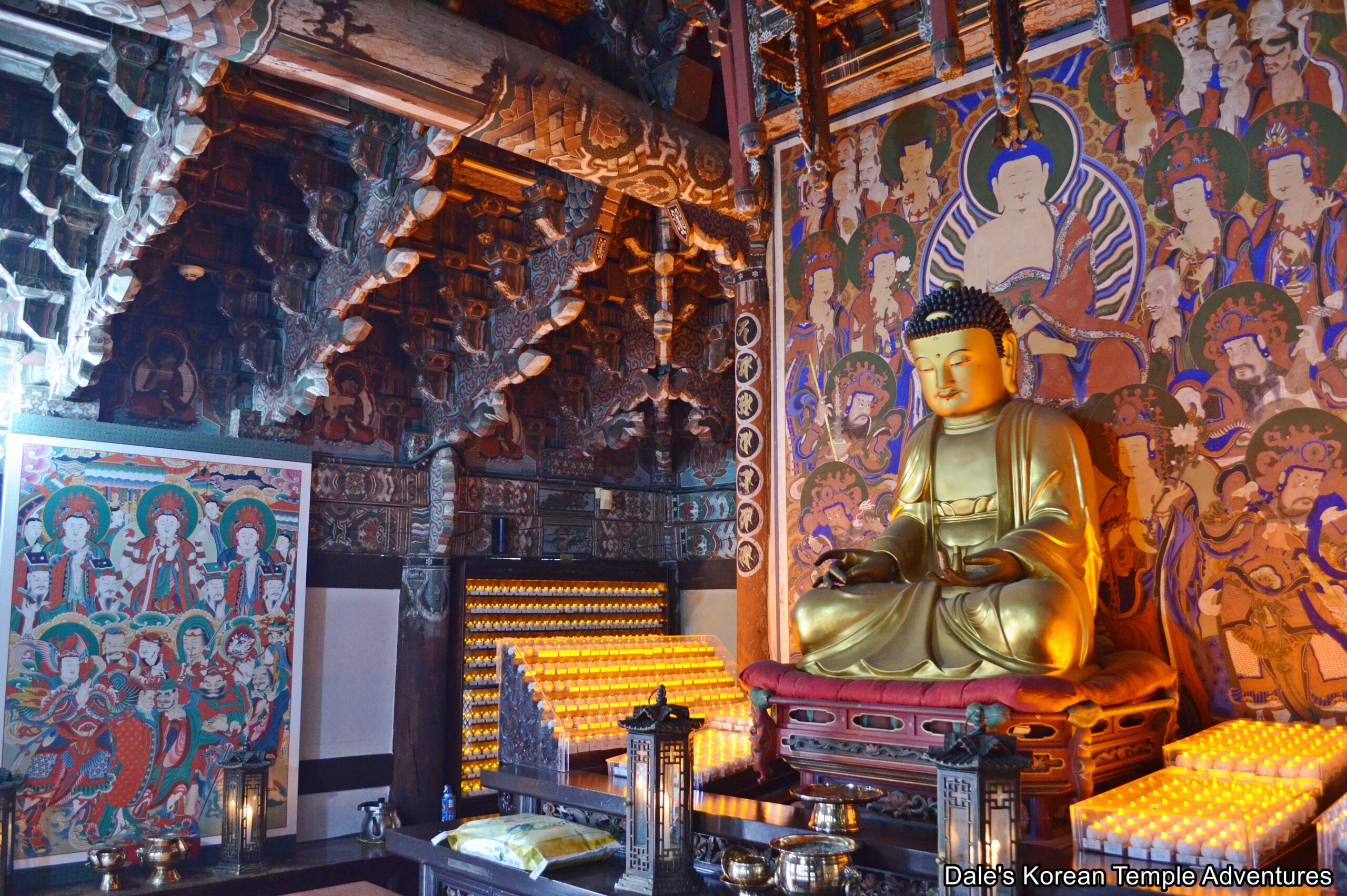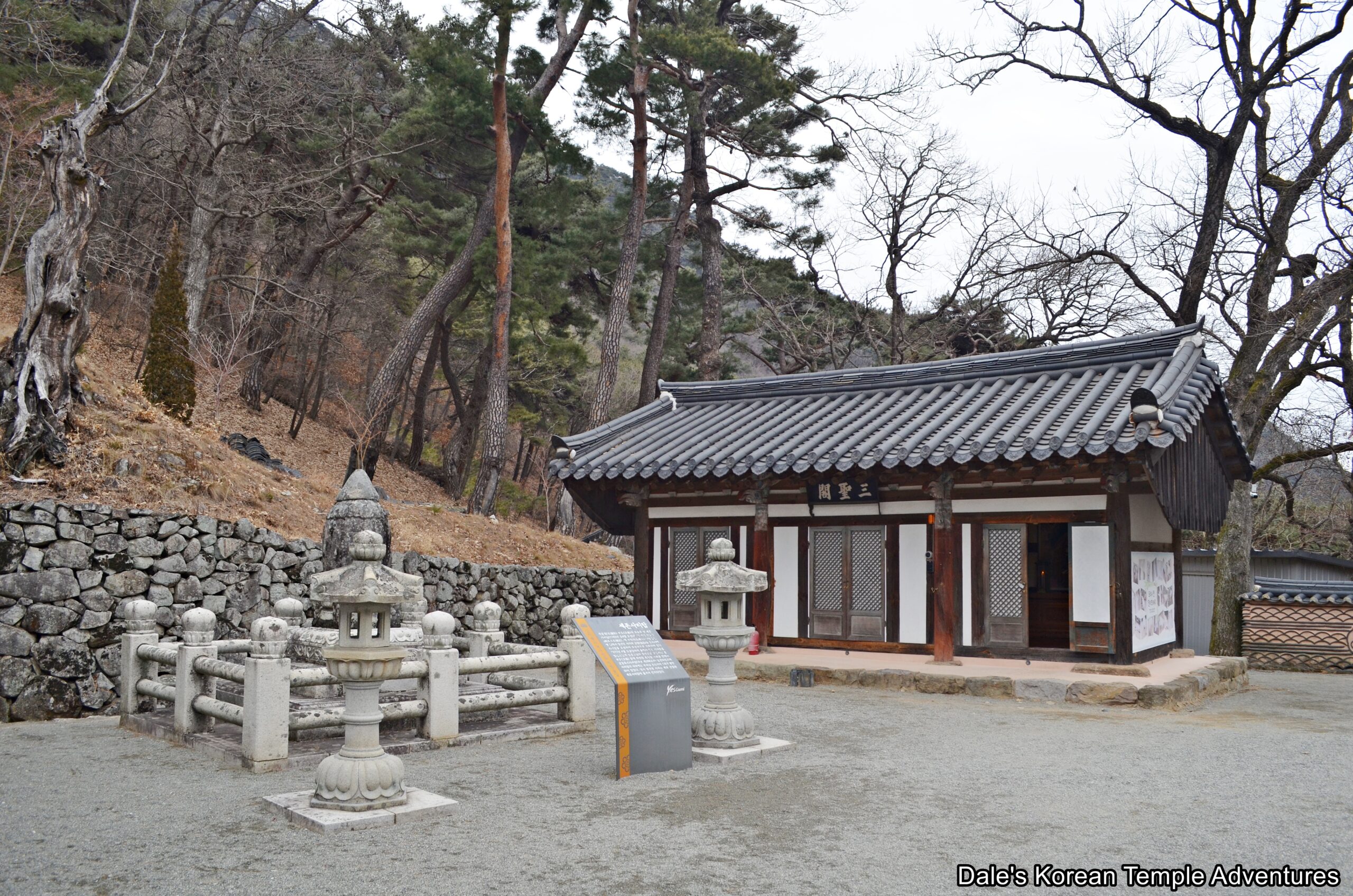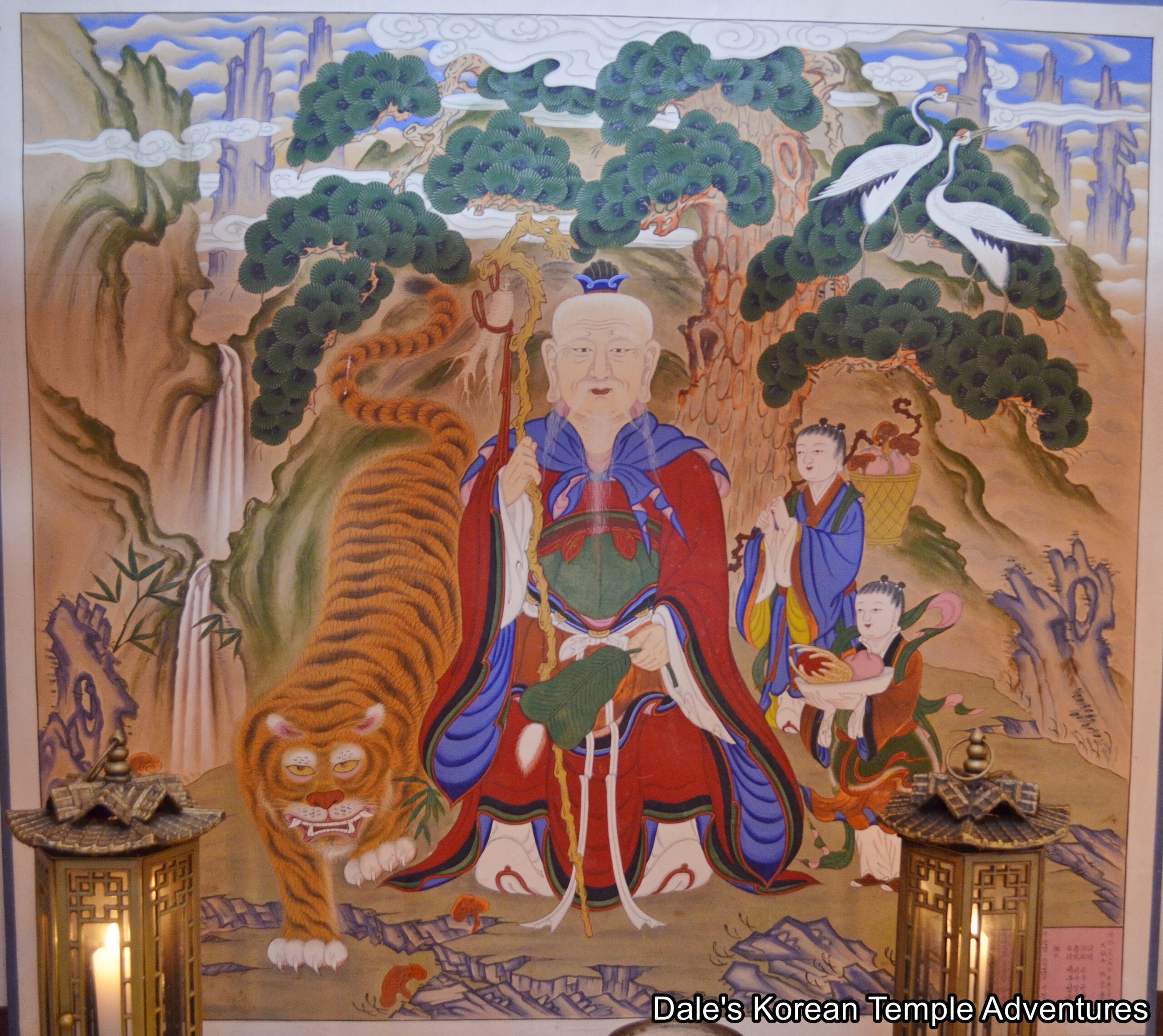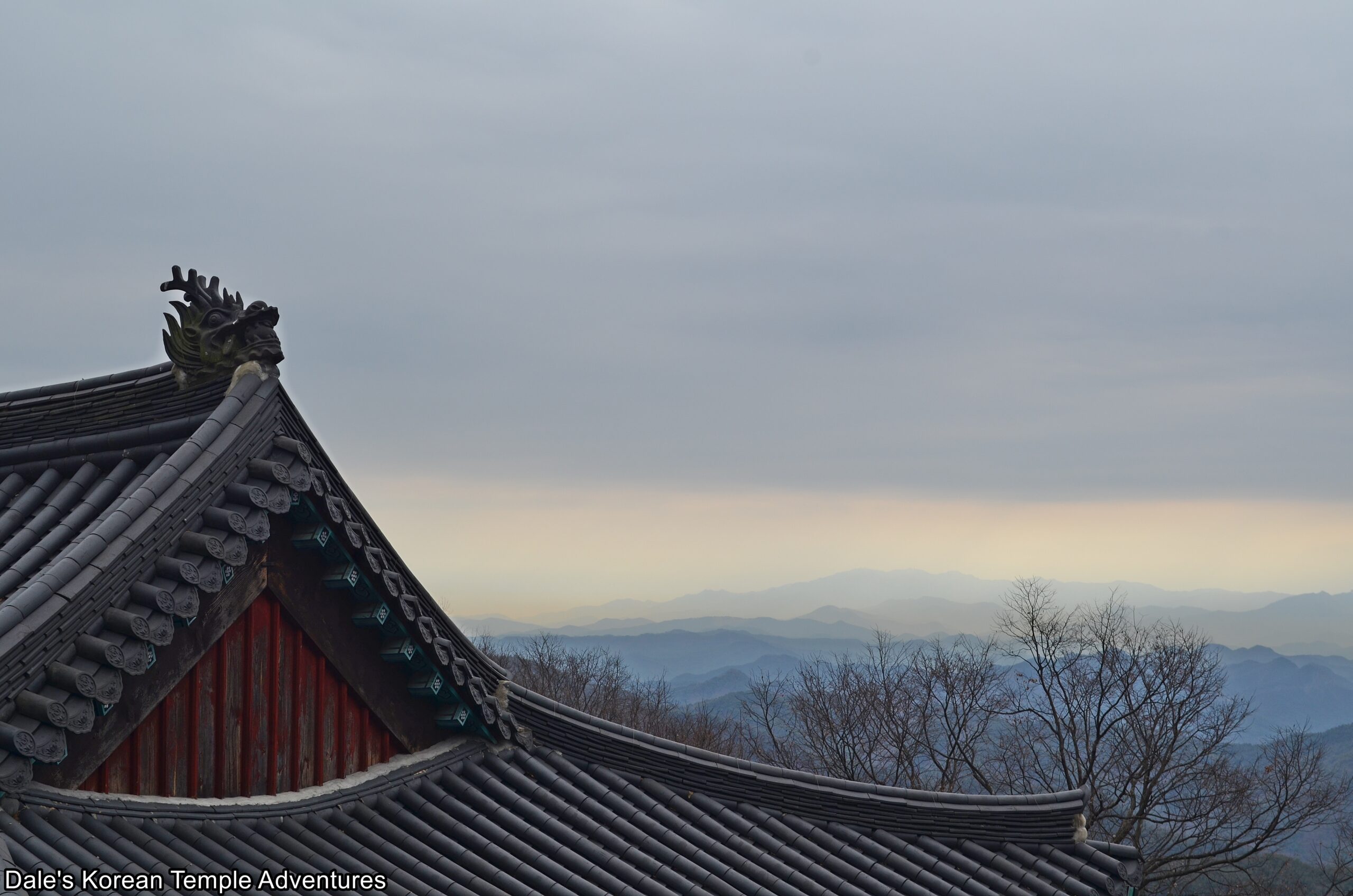Dorisa Temple – 도리사 (Gumi, Gyeongsangbuk-do)
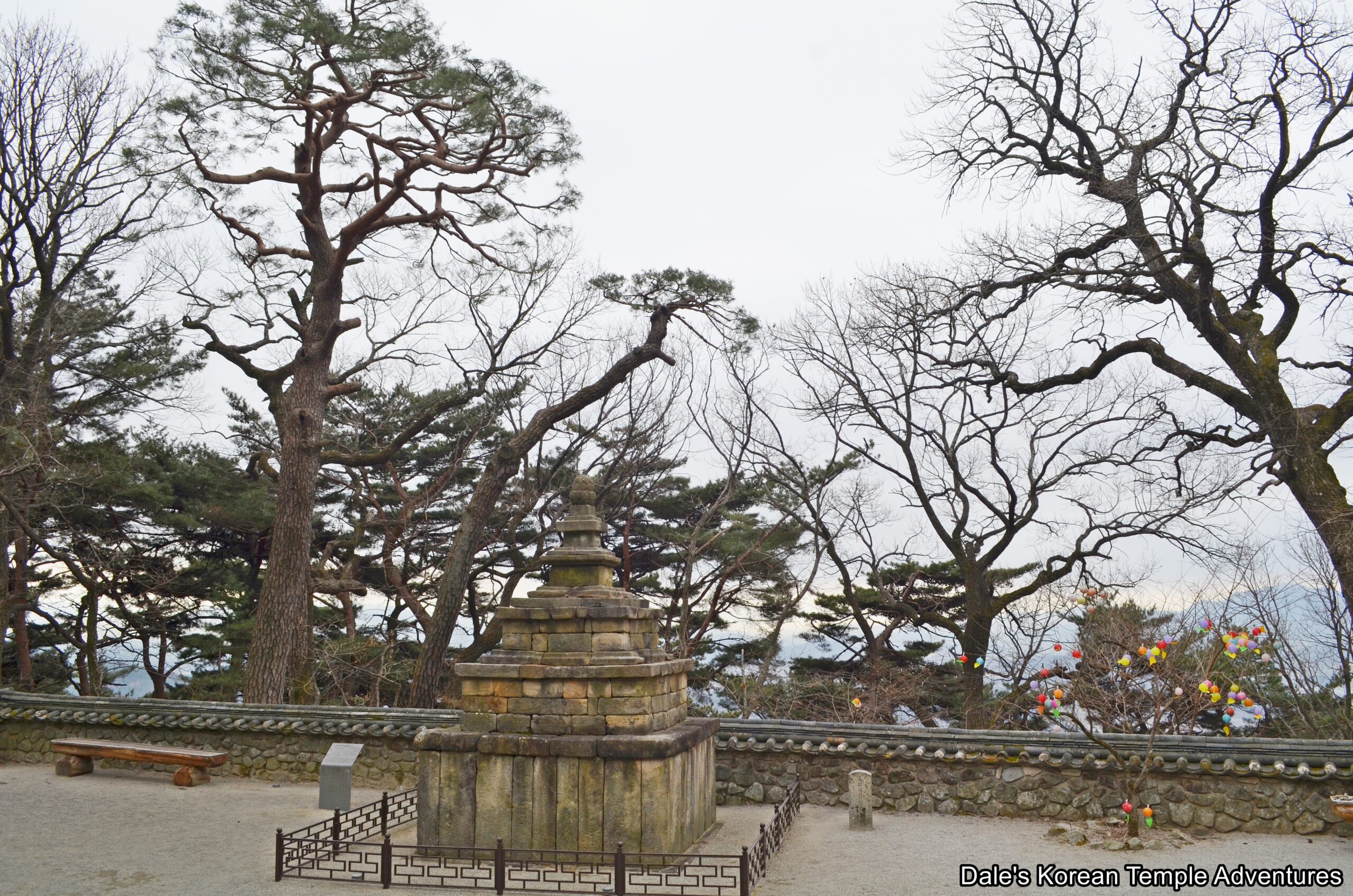
Temple History
Dorisa Temple is located on Mt. Naengsan (694 m) in northern Gumi, Gyeongsangbuk-do. The exact date of the temple’s first founding is unknown, however, it’s believed to date back to the fifth century. Additionally, it’s said that Dorisa Temple was the first of its kind in the Silla Kingdom (57 B.C. – 935 A.D.). The earliest documentation of the founding of Dorisa Temple is found in the “Shinjeungdongguk Yeoji,” which was compiled in 1530. In this text, it states how the monk Ado-hwasang, who looked similar to King Nulji of Silla (r. 417-458 A.D.), built a temple after seeing that the area was in full bloom even though it was the dead of winter. More specifically, the legend states that the monk Ado-hwasang, who was a Goguryeo (37 B.C. – 668 A.D.) monk, was leaving Seorabeol (modern Gyeongju) to help spread Buddhism. While on this journey, Ado-hwasang saw a place blooming with pear and peach blossoms in the dead of winter. As a result of this auspicious sign, Ado-hwasang decided to build a temple on this site that he named Dorisa Temple, which means “Peach and Pear Temple” in English.
Dorisa Temple continued to exist as a temple through the Goryeo Dynasty (918-1392), until it was eventually destroyed by fire during the Imjin War (1592-98). Later, the temple would be rebuilt with the addition of a monument for the monk Ado-hwasang in 1639. In 1645, a wooden Amita-bul (The Buddha of the Western Paradise) statue was enshrined at the temple. However, in 1677, a large fire broke out at the temple destroying all of the buildings including the Daeung-jeon Hall. All that was saved was the neighbouring Geumdangam Hermitage and the Amita-bul statue.
After its destruction, the temple was rebuilt on the hermitage grounds. So the hermitage changed its name from Geumdangam Hermitage to that of Dorisa Temple. In the process, the statue of Amita-bul was moved, as well. In 1743, the Jeokmyeol-bogung area was built to house the sari (crystalized remains) of the Buddha and the “Gilt-bronze Reliquary from Sakyamuni Stupa of Dorisa Temple” that they were housed in. In 1807, parts of the temple were reconstructed; and in 1823, the Josa-jeon Hall was rebuilt. Finally, and in 1876, the present Geukrak-jeon Hall was built. More recently, Dorisa Temple continues to grow in size.
Dorisa Temple is the source of one National Treasure and one Korean Treasure. The National Treasure, which is National Treasure #208, is the aforementioned “Gilt-bronze Reliquary from Sakyamuni Stupa of Dorisa Temple,” which is now housed at the Jikjisa Temple Seongbo Museum. As for the Korean Treasure, it’s the distinctive “Stone Pagoda of Dorisa Temple,” which is Korean Treasure #470.
Temple Layout
As you near the temple parking lot to your left, you’ll notice the large Temple Stay building and administrative office to the right. Back at the temple parking lot, and heading to the left, you’ll pass by a stone “Haein-do” monument, as well as the Jong-ru Pavilion.
Continuing past the elevated bell pavilion, you’ll notice an equally elevated shrine hall to your left. This is the reconstructed Jeokmyeol-bogung (shrines that house the sari, crystalized remains, of the Buddha, Seokgamoni-bul). At the base of the stairs that lead up to the shrine hall, you’ll find a child-like stone monk smiling at you. Climbing the stairs, you’ll find the Jeokmyeol-bogung. The exterior walls to this shrine hall are adorned with paintings dedicated to Munsu-bosal (The Bodhisattva of Wisdom), Bohyeon-bosal (The Bodhisattva of Power), and a set of Palsang-do (The Eight Scenes from the Buddha’s Life). Stepping inside the Jeokmyeol-bogung, you’ll notice that there are no statues on the main altar similar to the Daeung-jeon Hall at Tongdosa Temple. Instead, there is simply a window that looks out onto the outdoor shrine that contains the Buddha’s remains. In the centre of this outdoor shrine is an elevated stupa with images of the Four Heavenly Kings, as well as locked doors, engraved on it. This is where the sari are housed. To the left and right of this elevated platform with the Buddha’s stupa are two reliefs. One is dedicated to Munsu-bosal, while the other is dedicated to Bohyeon-bosal. And to the right and left of these reliefs are two stone lanterns with the outline of Seokgamoni-bul (The Historical Buddha) on the main light chamber for the stone lanterns.
To the east of the Jeokmyeol-bogung, and down a trail, you’ll find an outdoor shrine dedicated to the monk Ado-hwasang. The outdoor shrine consists of a large, bronze statue dedicated to Ado-hwasang. While the statue meditatively looks out on Dorisa Temple, there are a pair of colourful lotus flower pictures on either side of his head to the rear.
Descending the stairs that lead up to the Ado-hwasang shrine, and to the rear of the temple’s administrative office, you’ll find the main temple courtyard at Dorisa Temple. The first building you’ll pass by in this area are the monks’ dorms. Once you’re past this, you’ll notice a bronze statue of Podae-hwasang (The Hempen Bag) to your right and the compact Geukrak-jeon Hall to your left.
The exterior walls to the Geukrak-jeon Hall are adorned with a combination of dancheong colours and guardian murals. Stepping inside the Geukrak-jeon Hall, you’ll find a solitary image dedicated to Amita-bul (The Buddha of the Western Paradise) on the main altar underneath a diminutive, red canopy overhead. To the left of the main altar is a modern Shinjung Taenghwa (Guardian Mural). And to the right of the main altar is a mural dedicated to Jijang-bosal (The Bodhisattva of the Afterlife). The entire interior is filled with rich and colourful decorative dancheong paintings.
In front of the Geukrak-jeon Hall, you’ll find the oddly designed “Stone Pagoda of Dorisa Temple,” which is the solitary Korean Treasure at Dorisa Temple. This pagoda consists of five stories. The bottom story is considered the platform to the structure, which supports the main body of the pagoda. There are two middle stories. The first and second stories of the pagoda were built by piling up two to three layers of small square stones just like the pagoda was built with bricks. The roof stones consist of a tiered structure. This pagoda was built using a unique style, especially when one compares it to other stone pagodas in Korea. The pagoda stands 3.3 metres in height, and it’s believed that this pagoda was first erected during the Goryeo Dynasty.
To the rear of the Geukrak-jeon Hall, on the other hand, is a rear courtyard that houses a stone stupa, as well as the Samseong-gak Hall to the right. The exterior walls to this shaman shrine hall are adorned in simple dancheong colours, which matches the three paintings housed inside the Samseong-gak Hall. The three paintings housed inside this hall are dedicated to Dokseong (The Lonely Saint), Chilseong (The Seven Stars), and Sanshin (The Mountain Spirit).
How To Get There
From the Gumi Bus Terminal, there are buses that go out to Dorisa Temple; however, these buses would take at least a couple of hours to get to the temple. So if you don’t own your own car, the next best way is to take a taxi. The taxi ride will take about 25 minutes over 20 km. And the taxi ride should cost about 20,000 won (one way). If you’re traveling in a group, this is definitely the best option.
Overall Rating: 7.5/10
Dorisa Temple is distinctive for purportedly being the oldest temple in the former Silla territory, as well as for housing one of the more peculiar historic pagodas that you’ll find in Korea. Additionally, it has a modern Jeokmyeol-bogung that purportedly house the sari (crystalized remains) of the Buddha, Seokgamoni-bul, from the Silla Dynasty. The views are stunning, as is the interior of the Geukrak-jeon Hall. Dorisa Temple was definitely a nice surprise.
